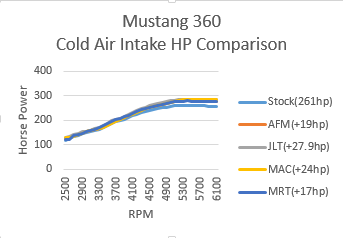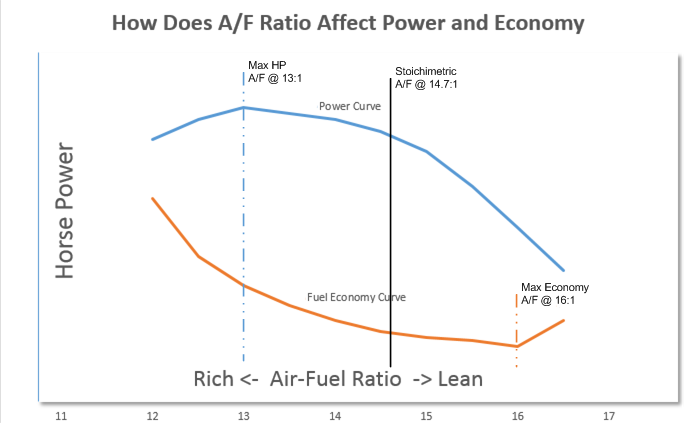
Installing an aftermarket Cold Air Intake is extremely popular now a days. My son and I have installed several on his friend's cars.
I have read numerous articles and watched numerous videos where mechanics state they hate aftermarket parts. ScannerDanner even has a video demonstrating how just missing the air filter causes enough air disturbance that lean codes are triggered.
From memory, I have installed CAI on the following cars.
Note:
Many of the above cars were not mine. In addition, if I did install a CAI on a car of mine, I always went with CARB legal kit.
Unfortunately, I do not have access to a dynamometer, so I cannot prove that an installation of a Cold Air Intake(CAI) adds horsepower. But, I can discuss what I personally witnessed of how an installation of a CAI affects fuel trims. After installing a CAI on the 2007 Civic SI and 2015 Subaru BRZ, I hooked up my scan tool and noticed that the short term fuel trims were both about -7% to -5% pretty much throughout RPM range. Therefore, this implies that the CAI changed the PCM's model of the engine enough that the STFT is affected.
From my observations, watching videos, reading performance enhancement books, and reading web pages,
it appears the change in airflow due to wide, smooth ducting and removal of resonators affects how the MAF senses the volume of air entering the engine. From my data, the installation of a CAI causes the engine to be in a Rich State putting the fuel system in a Lean Response.
Looking at following graph, please note the following:

At WOT, the fuel system leaves closed loop, and therefore, the Lean Response is not be used. Thus, with a CAI installed, the extra fuel causes the ratio to go richer bringing the ratio into an area of the air/fuel ratio that could produce more power. Of course, all of this depends on many factors in the engine. Not all engines produce more power closer to the 12.5:1 air/fuel ratio. I think this is why there is so much variation of results based on car. I also think newer cars are being designed so well that they produce more power around the 13:1 ratio, where most newer cars go at WOT. So, making them too rich takes them away from their peak horsepower.
Unfortunately, this would be a very difficult hypothesis to prove since I would have to test many cars, head configurations, and Cold Air Intakes.
The reason I even wanted to discuss this was to raise awareness that if you’re going to work on a car, I suggest you look under the hood to see what aftermarket parts/systems have been installed. This is because some aftermarket parts can effect PIDs, STFT, LTFT, MAF etc.… values. Therefore, if you didn’t know this, you might end up chasing your tail on why one or more PIDs look out of range. Yet, these PIDs might be 'ok' due to the modifications.
I’m not walking into this one…. There are almost as many opinions on this topics as there are Cold Air Intake packages available. I’ll just share what others have determined.
Over the years, I have read and watched numerous videos and magazine articles discussing dynamometer pulls to determine if an installation of a CAI increases horsepower. The following table summarizes the results of the provided links and videos below:
| Source | Summary of findings |
| ScannerDanner | CAI and even running without an air filter can change the engine response that the controller model is altered so much that fuel trims are altered. |
| Mighty Car Mods | A turbo car with a CAI installed exhibited nearly no increase in horsepower. |
| Mighty Car Mods | A naturally aspirated car benefited from a CAI around 5% |
| Mustang 360 |
Naturally aspirated 2005 Mustang GT did benefit up to 10% with an installation of a cold air intake. Check this out by clicking on the following graph:

|